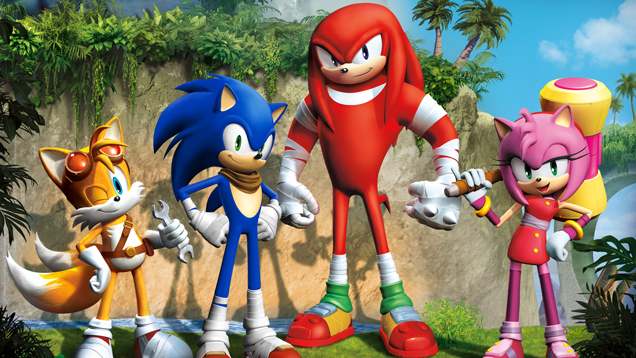An ode to the glitch: The underrated art form of the gaming world
 CREDIT: SEGA
CREDIT: SEGASonic Boom's glitches made the game almost unplayable.
NEW WESTMINISTER (CUP) – I watched them fall around me— my friends, all of them dead, and myself about to follow in a few short moments. In the last moment before the monster’s double-fisted strike crushed me to the hard, icy ground, I had only one thought on my mind: “Not again.”
Repeating this one stupidly hard fight was incredibly annoying, and I was getting nothing for my trouble except for a dimmed screen and a declaration that I’d failed, the Inquisition had fallen without its leader, the world of Thedas was doomed, and so forth. I knew I was at the right level for this fight. I’d even killed giants before. It was just this one.
Deciding to give it one last shot, I reloaded from my last save point and rounded the corner of the snowy courtyard with my companions, determined not to go down without a decent fight.
And that was the moment in which the giant I’d been battling with for nearly half an hour took off into the sky, never to be seen again.
After a few seconds of rapid blinking, I pressed on into the fray, camera panned upward for any sign of the beast to suddenly come crashing down on my head. Nothing. The enemy had successfully won the Space Race, apparently, but I was about to win the war.
Glitches are amazing.
Yes, we complain about them, and with good reason. A game with a lot of glitches is often a sign of rushed and shoddy design, usually when the developers want to throw a game out in time for a holiday rush without caring about actually finishing the damn thing (I’m looking at you, Sonic Boom). But even the best of games can fall prey to the dreaded glitch.
Clipping, half-rendered environments, and broken if-then sequences resulting in disrupted game play are generally the last thing you want when you set down your wallet and shell out $80 on a new game. The sudden departure from realistic physics can really jolt you out of the story, and in the case of PC games translated to console, a lot of quality can be lost to these snags in the software. Still, I say the common glitch can and should be celebrated as an art-form in and of itself, independent of the developer’s intentions.
The best example of this would probably be the “Geddan” meme of the late 2000s. Starting in 2007, a bunch of video game enthusiasts in Japan noticed a glitch in the Nintendo 64 game GoldenEye. If the cartridge was not inserted correctly, the characters in the game would all begin to flail spastically. It’s not really a glitch if you’re tampering with the equipment to make it happen, in my opinion, but I digress.
Videos of these glitches got paired up with the 1997 J-pop song “Promise”, and the meme spread worldwide. People started making videos of themselves imitating the glitches through dance. The “dance” required the subject of the video to take hundreds of photos of themselves and animate them in a stop-motion fashion, in order to replicate the glitch in the game. Nearly 10 years later, iterations of “Geddan” are still being made and uploaded to the Internet.
Popular gaming sites and channels now make video compilations dedicated to glitches, because glitches have entertainment value in and of themselves. Whether the NPCs are floating in mid-air or being slowly absorbed into the ground, whether a cutscene is interrupted by the sudden appearance of a dragon or disappearance of one of the speaking characters, glitches contribute to the fun of modern video games. I can guarantee glitches in Pong weren’t nearly as hilarious as the glitches we see today.
So why not appreciate the glitches while we have them, before the technology advances to a point where they’ll all but disappear, if such a thing is even possible? All I know is that without my personal Hail Mary glitch, I’d probably still be stuck in that courtyard, getting smashed into elven pulp by a giant who clearly just wanted his chance to fly.














